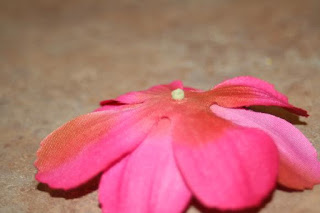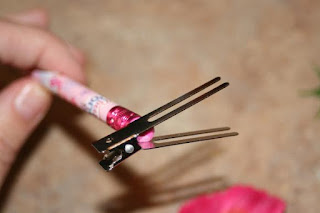 fresh berry tarts with coconut pastry cream
fresh berry tarts with coconut pastry creamLong time no see, everyone!
I have been on hiatus.
During my "cleansing/detoxification" of sugar for the last few weeks, I had tons of marking as this is the end of the school year.
As I type this, my last huge pile of projects awaiting marking is sitting on my dining room table: board games, poetry anthologies, art work, dioramas, video-taped skits and other such creative takes on "To Kill a Mockingbird Pride Projects" (so-named for the pride each student is supposed to have, for having created projects that showcase their individual talents). The last few make-up exams are being scheduled, a handful of anxious individuals have yet to recite their memorized "Tomorrow and tomorrow" Macbeth soliloquies, and a stack of textbook receipts for lost books are awaiting my attention. I recently powered through 2 class sets of essays and I'm feeling euphoric. The marking burden is starting to lift slightly from my achey shoulders.

I figured it was time to celebrate with a batch of pastry cream! However, you know me...I had to tinker with the classic flavour of vanilla and add something to it. I decided upon Coconut flavoured pastry cream. From the market I had purchased a fresh little box of blueberries and a huge box of strawberries. In my freezer I had on hand a 24/pack sleeve of frozen tart shells and a half a can's worth of leftover Coconut milk.
I decided that Sherry Yard's Pastry Cream recipe with the Coconut Variation would best suit the bill today. I opted to use 3 large eggs in the recipe instead of the 5 large egg yolks. I thought it would be lighter and less yellow, lending to a more coconutty flavour and appearance.

Yard's recipe is so easy. I was happy with the results of using the whole eggs. The cornstarch I used to thicken the pastry cream enabled me to make the pastry cream in practically a couple of minutes! I was whisking away and it was pretty instantaneous how it thickened to a pudding consistency. It was smooth and though I strained it as directed, only a few bits were left in the strainer. It wasn't grainy at all. Yum. The flavour was very nice. I'll be using this one again.

COCONUT PASTRY CREAM
from Sherry Yard's The Secrets of Baking
yield: 2 to 2 1/4 cups, enough for two 9-inch tarts or 24 mini tarts
1 cup milk
1 cup unsweetened coconut milk
1/2 cup sugar
1 1/2 t finely chopped orange zest [I left this out entirely]
2 t vanilla extract
3 T all-purpose flour or cornstarch
pinch of salt
5 large egg yolks or 3 large eggs, chilled
1 T unsalted butter, softened
- If you will need to cool this quickly, line a baking sheet with plastic film and set aside.
- Bring the milk, coconut milk, 1/4 cup sugar, and vanilla to a simmer in a medium nonreactive saucepan over medium heat
- Meanwhile, sift together the remaining 1/4 cup sugar, the flour or cornstarch, and salt onto a piece orf parchment paper. Whisk the egg yolks or eggs in a large bowl. Add the sfited dry ingredients and whisk until fluffy.
- When the milk comes to a simmer, remoe from the heat and ladle out 1/2 cup of the hot milk mixture. Drizzle it slowly into the eggs while whisking. Once the 1/2 cup nilk is incorporated into the eggs, pour the mixture back into the hot milk, whisking constantly. Be sure to scrape all the eggs into the pan with a rubber spatula.
- Immediately begin to rapidly whisk the pastry cream. In less than 1 minute, it will boil and begin to thicken. Continue to whisk for about 3 minutes, or until it has the consistency of pudding. To test the cream for doneness, tilt the saucepan to one side. The cream should pull away from the pan completely. Rinse and dry the large bowl.
- Strain the pastry cream through a fine-mesh strainer back into the bowl. Add the butter and stir until it is metled and incorporated. If the cream seems grainy, pulse it in a food processor until smooth. The cream is now ready to use, or it can be cooled to room temperature and refrigerated for up to 3 days. To cool the pastry cream quickly, spread it out on a baking sheet lined with plastic film. To prevent a skin from forming as it cools, place a sheet of plastic film directly on the surface.
FRESH BERRY TARTS
I used fresh strawberries and blueberries, but I imagine raspberries and blackberries would be equally good. I can envision sliced mangos, kiwi and other soft-fleshed fruit being equally delicious resting on the pastry cream.
1 "sleeve" of frozen tart shells (24 count)
1 cup fresh blueberries
4 cups strawberries, sliced
- Bake the frozen tarts as directed on the package. Mine called for 12 minutes at 375degrees F.
- Wash and prepare the fruit. I tasted the strawberries and didn't find them sweet enough. Unfortunately, it isn't strawberry season in Vancouver yet. When it is, I'm definitely going to make this recipe again. Local is the way to go with fruit. Today, I used those honking huge California strawberries that look kind of malformed...and they were slightly white inside. I know that's not a good sign. But that's all that I could find this time of the year. sigh. The way I fixed this washed out strawberry flavour problem was I sprinkled a couple of tablespoons of granulated sugar on the sliced strawberries. I allowed the berries to macerate a bit in the sugar and eventually it produced this syrup at the bottom of the bowl. I was short on time and didn't save the juices to reduce on the stovetop to a thick syrup--but if you had the time, you should. Then you'd incorporated the cooled syrup back into the berries.
- I leave the baked tart shells unfilled, stored in a tupperware container until ready to serve.
- When ready to serve, fill each tart shell with a tablespoon or so of cold pastry cream. Arrange your berries on top.
- Refrigerate any leftover prepared tarts. The tart shells will begin to get soft from the moisture in the pastry cream and fruit so I try to consume them quickly after assembly.
******
What else can you do with pastry cream? Take a look at my Cream Puff Trio post!
I'm entering this berry tart in the Nutriferia Berrilicious Roundup. Go check it out!
























































